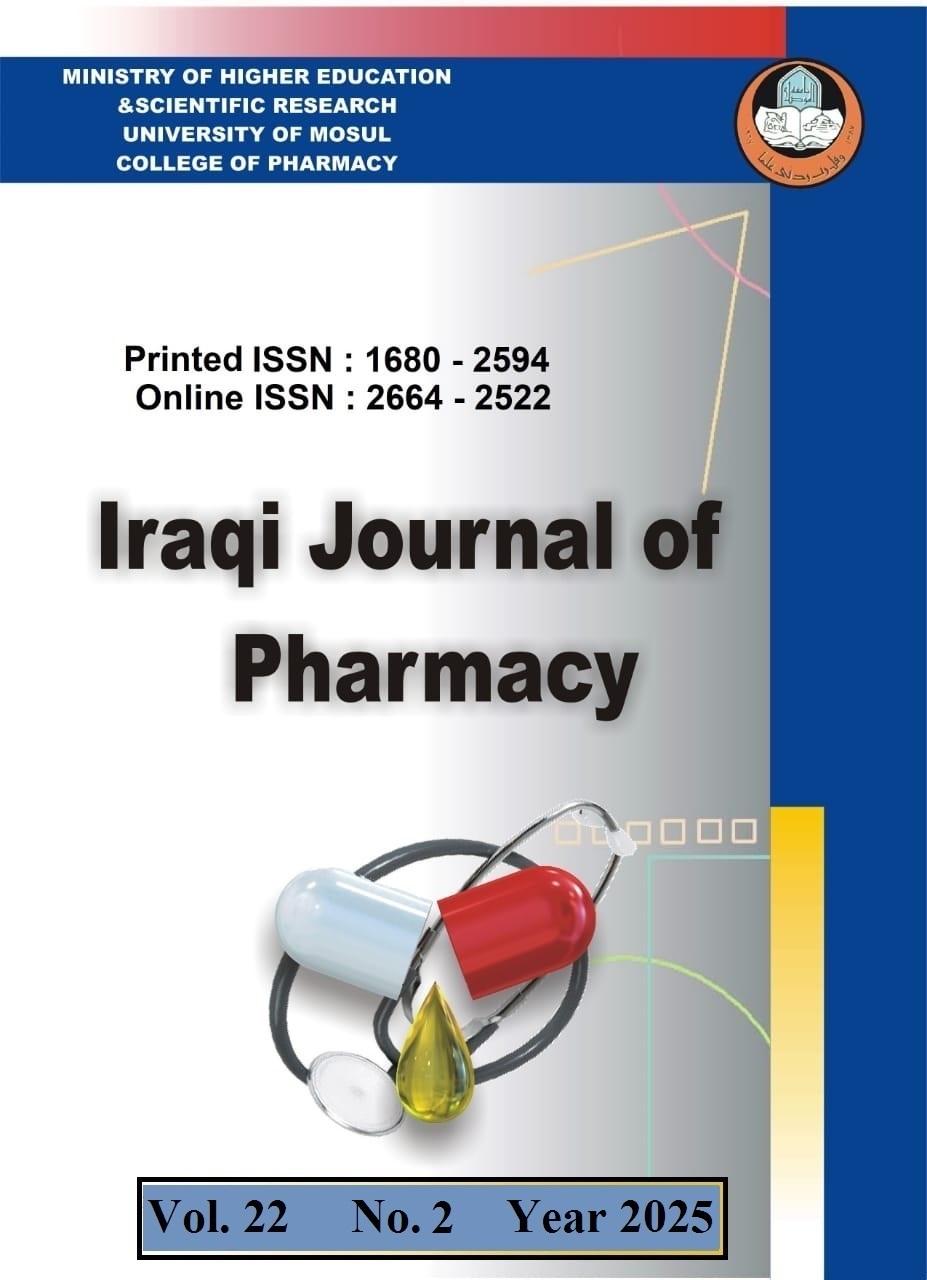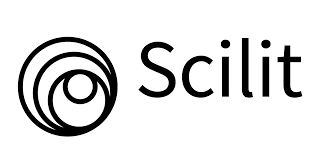Mechanisms and Linkage of Insulin Signaling, Resistance, and Inflammation
Abstract
Background: Chronic inflammation is responsible for low insulin sensitivity, making obesity a major risk factor for developing insulin resistance, type 2 diabetes mellitus, and metabolic syndrome. Increased expression of inflammatory cytokines activates several signaling pathways, consequently leading to the accumulation of fats in adipocytes and contributing to the pathogenesis of insulin resistance. Aim: The review aimed to provide an overview of the potential molecular correlation between the insulin signaling pathway and the inflammatory process in addition to their linkage to the development of insulin resistance and other metabolic diseases, with an exploration of the possibility of using drugs that target inflammation in the management of diabetes. Results: Based on the obtained data from the latest literature, the source of cytokines in insulin-resistant states is the insulin targets themselves including the adipose tissue and liver, but to a greater extent the activated macrophages. Prolonged inflammation in these tissues may result in systemic insulin resistance via endocrine signaling and localized insulin resistance by paracrine/autocrine cytokine signaling. Conclusion: Inflammation is involved in the pathogenesis of insulin resistance and diabetes type 2, consequently, in the management of insulin resistance, anti-inflammatory agents may benefit, and the risk assessment may benefit from the use of inflammatory biomarkers in such disorders.
References
- Abdul-Ghani MA, DeFronzo RA. Pathogenesis of insulin resistance in skeletal muscle. Journal of biomedicine & biotechnology. 2010; 2010: 476279.
- Abed MN, Alassaf FA, Jasim MHM, Alfahad M, Qazzaz ME. Comparison of Antioxidant Effects of the Proton Pump-Inhibiting Drugs Omeprazole, Esomeprazole, Lansoprazole, Pantoprazole, and Rabeprazole. Pharmacology. 2020; 105(11-12): 645-651.
- Adams CJ, Kopp MC, Larburu N, Nowak PR, Ali MMU. Structure and molecular mechanism of ER stress signaling by the unfolded protein response signal activator IRE1. Frontiers in Molecular Biosciences. 2019; 6(MAR).
- Ahmed G, Abed M, Alassaf F. An Overview of the Effects of Sodium-Glucose Cotransporter-2 Inhibitors on Hematological Parameters in Diabetic Patients. Iraqi Journal of Pharmacy. 2023; 20(1): 65-71.
- Akira S, Uematsu S, Takeuchi O. Pathogen Recognition and Innate Immunity. Cell. 2006; 124(4): 783-801.
- Al-dabbagh BMA, Abed MN, Mahmood NM, Jasim AAFMH, Alfahad M, and Thanoon IA-J. Anti-inflammatory, antioxidant and hepatoprotective potential of milk thistle in albino rats. Latin American journal of pharmacy. 2022; 14(9): 1832-1841.
- Alassaf FA, Jasim MHM, Alfahad M, Qazzaz ME, Abed MN, Thanoon IA-J. Effects of bee propolis on FBG, HbA1c, and insulin resistance in healthy volunteers. Turkish Journal of Pharmaceutical Sciences. 2021; 18(4): 405-409.
- Alemzadeh R, Kichler J. Gender differences in the association of insulin resistance and high-sensitivity c-reactive protein in obese adolescents. Journal of diabetes and metabolic disorders. 2014; 13(1): 35.
- Alfadul H, Sabico S, Al-Daghri NM. The role of interleukin-1 in type 2 diabetes mellitus: A systematic review and meta-analysis. Frontiers in Endocrinology. 2022; 13.
- Alfahad M, Qazzaz ME, Abed MN, Alassaf FA, Jasim MHM. Comparison of Anti-oxidant activity of different brands of esomeprazole available in Iraqi pharmacies. Systematic Reviews in Pharmacy. 2020; 11(5): 330-334.
- Arkan MC, Hevener AL, Greten FR, et al. IKK- links inflammation to obesity-induced insulin resistance. Nature Medicine. 2005; 11(2): 191-198.
- Arkun Y. Dynamic Modeling and Analysis of the Cross-Talk between Insulin/AKT and MAPK/ERK Signaling Pathways. PLOS ONE. 2016; 11(3): e0149684.
- Bai B, Chen H. Metformin: A Novel Weapon Against Inflammation. Frontiers in Pharmacology. 2021; 12: 622262.
- Bertola A, Bonnafous S, Anty R, et al. Hepatic Expression Patterns of Inflammatory and Immune Response Genes Associated with Obesity and NASH in Morbidly Obese Patients. PLOS ONE. 2010; 5(10): e13577.
- Brown M, Dainty S, Strudwick N, et al. Endoplasmic reticulum stress causes insulin resistance by inhibiting delivery of newly synthesized insulin receptors to the cell surface. Molecular biology of the cell. 2020; 31(23): 2597-2629.
- Ceriello A. Thiazolidinediones as antiinflammatory and antiatherogenic agents. Diabetes/Metabolism Research and Reviews. 2008; 24(1): 14-26.
- da Silva Rosa SC, Nayak N, Caymo AM, Gordon JW. Mechanisms of muscle insulin resistance and the cross-talk with liver and adipose tissue. Physiological reports. 2020; 8(19): e14607.
- de Luca C, Olefsky JM. Inflammation and insulin resistance. FEBS Letters. 2008; 582(1): 97-105.
- Deans KA, Sattar N. Anti-Inflammatory Drugs and Their Effects on Type 2 Diabetes. Diabetes Technology & Therapeutics. 2006; 8(1): 18-27.
- Deshmane SL, Kremlev S, Amini S, Sawaya BE. Monocyte Chemoattractant Protein-1 (MCP-1): An Overview. Journal of Interferon & Cytokine Research. 2009; 29(6): 313-326.
- Draoui N, de Zeeuw P, Carmeliet P. Angiogenesis revisited from a metabolic perspective: role and therapeutic implications of endothelial cell metabolism. Open Biology. 2017; 7(12): 170219.
- Feng J, Lu S, Ou B, et al. The Role of JNk Signaling Pathway in Obesity-Driven Insulin Resistance. Diabetes, metabolic syndrome and obesity: targets and therapy. 2020; 13: 1399-1406.
- Flamment M, Hajduch E, Ferr P, Foufelle F. New insights into ER stress-induced insulin resistance. Trends in Endocrinology & Metabolism. 2012; 23(8): 381-390.
- Freitas-Lopes M, Mafra K, David B, Carvalho-Gontijo R, Menezes G. Differential Location and Distribution of Hepatic Immune Cells. Cells. 2017; 6(4): 48.
- Fujisaka S. The role of adipose tissue M1/M2 macrophages in type 2 diabetes mellitus. Diabetology International. 2021; 12(1): 74-79.
- Gaggini M, Morelli M, Buzzigoli E, DeFronzo R, Bugianesi E, Gastaldelli A. Non-Alcoholic Fatty Liver Disease (NAFLD) and Its Connection with Insulin Resistance, Dyslipidemia, Atherosclerosis and Coronary Heart Disease. Nutrients. 2013; 5(5): 1544-1560.
- Galadari S, Rahman A, Pallichankandy S, Galadari A, Thayyullathil F. Role of ceramide in diabetes mellitus: evidence and mechanisms. Lipids in Health and Disease. 2013; 12(1): 98.
- Giri B, Dey S, Das T, Sarkar M, Banerjee J, Dash SK. Chronic hyperglycemia mediated physiological alteration and metabolic distortion leads to organ dysfunction, infection, cancer progression and other pathophysiological consequences: An update on glucose toxicity. Biomedicine & Pharmacotherapy. 2018; 107: 306-328.
- Guebre-Egziabher F, Alix PM, Koppe L, et al. Ectopic lipid accumulation: A potential cause for metabolic disturbances and a contributor to the alteration of kidney function. Biochimie. 2013; 95(11): 1971-1979.
- Helmersson J, Vessby B, Larsson A, Basu S. Association of Type 2 Diabetes With Cyclooxygenase-Mediated Inflammation and Oxidative Stress in an Elderly Population. Circulation. 2004; 109(14): 1729-1734.
- Herold J, Kalucka J. Angiogenesis in Adipose Tissue: The Interplay Between Adipose and Endothelial Cells. Frontiers in Physiology. 2021; 11.
- Himsworth H. Diabetes Mellitus: Its differentiation into insulin-sensitive and insulin-insensitive types. International Journal of Epidemiology. 2013; 42(6): 1594-1598.
- Hotamisligil GS, Shargill NS, Spiegelman BM. Adipose expression of tumor necrosis factor-alpha: direct role in obesity-linked insulin resistance. Science (New York, NY). 1993; 259(5091): 87-91.
- Hotamisligil GS, Spiegelman BM. Tumor necrosis factor alpha: a key component of the obesity-diabetes link. Diabetes. 1994; 43(11): 1271-1278.
- Hua Q. Insulin: a small protein with a long journey. Protein & Cell. 2010; 1(6): 537-551.
- Jacinto E, Facchinetti V, Liu D, et al. SIN1/MIP1 maintains rictor-mTOR complex integrity and regulates Akt phosphorylation and substrate specificity. Cell. 2006; 127(1): 125-137.
- Jager J, AparicioVergara M, Aouadi M. Liver innate immune cells and insulin resistance: the multiple facets of Kupffer cells. Journal of Internal Medicine. 2016; 280(2): 209-220.
- Jasim MHM, Abed MN, Qazzaz ME, Alfahad M, Alassaf FA. Aspirin-aromatic amino acid conjugates as selective Cox-2 inhibitors: A docking study. Tropical Journal of Pharmaceutical Research. 2021; 30(3): 579-583.
- Jensen MD. Role of body fat distribution and the metabolic complications of obesity. The Journal of Clinical Endocrinology & Metabolism. 2008; 93(11):57-63.
- Kanda H. MCP-1 contributes to macrophage infiltration into adipose tissue, insulin resistance, and hepatic steatosis in obesity. Journal of Clinical Investigation. 2006; 116(6): 1494-1505.
- Kim J, Lee J. Role of obesity-induced inflammation in the development of insulin resistance and type 2 diabetes: history of the research and remaining questions. Annals of pediatric endocrinology & metabolism. 2021; 26(1): 1-13.
- Kim K, Ryu D, Dongiovanni P, et al. Degradation of PHLPP2 by KCTD17, via a Glucagon-Dependent Pathway, Promotes Hepatic Steatosis. Gastroenterology. 2017; 153(6): 1568-1580.e10.
- Kumar DP, Koka S, Li C, Rajagopal S. Inflammatory Mediators in Obesity. Mediators of Inflammation. 2019; 2019: 1-2.
- Lebovitz H. Insulin resistance: definition and consequences. Experimental and Clinical Endocrinology & Diabetes. 2001; 109(Suppl 2): S135-S148.
- Lee S-H, Park S-Y, Choi CS. Insulin Resistance: From Mechanisms to Therapeutic Strategies. Diabetes & Metabolism Journal. 2022; 46(1): 15-37.
- Lee S, Lynn EG, Kim J-A, Quon MJ. Protein kinase C-zeta phosphorylates insulin receptor substrate-1, -3, and -4 but not -2: isoform specific determinants of specificity in insulin signaling. Endocrinology. 2008; 149(5): 2451-2458.
- Lin Y, Berg AH, Iyengar P, et al. The Hyperglycemia-induced Inflammatory Response in Adipocytes. Journal of Biological Chemistry. 2005; 280(6): 4617-4626.
- Longo M, Zatterale F, Naderi J, et al. Adipose Tissue Dysfunction as Determinant of Obesity-Associated Metabolic Complications. International Journal of Molecular Sciences. 2019; 20(9): 2358.
- Mantovani A, Sica A, Sozzani S, Allavena P, Vecchi A, Locati M. The chemokine system in diverse forms of macrophage activation and polarization. Trends in Immunology. 2004; 25(12): 677-686.
- Mayer JP, Zhang F, DiMarchi RD. Insulin structure and function. Biopolymers. 2007; 88(5): 687-713.
- Merz KE, Thurmond DC. Role of Skeletal Muscle in Insulin Resistance and Glucose Uptake. In: Comprehensive Physiology. Wiley; 2020:785-809.
- Nolan CJ, Prentki M. Insulin resistance and insulin hypersecretion in the metabolic syndrome and type 2 diabetes: Time for a conceptual framework shift. Diabetes and Vascular Disease Research. 2019; 16(2): 118-127.
- Olivares-Reyes JA, Arellano-Plancarte A, Castillo-Hernandez JR. Angiotensin II and the development of insulin resistance: Implications for diabetes. Molecular and Cellular Endocrinology. 2009; 302(2): 128-139.
- Payankaulam S, Raicu A-M, Arnosti DN. Transcriptional Regulation of INSR, the Insulin Receptor Gene. Genes. 2019; 10(12): 984.
- Popko K, Gorska E, Stelmaszczyk-Emmel A, et al. Proinflammatory cytokines IL-6 and TNF- and the development of inflammation in obese subjects. European Journal of Medical Research. 2010; 15(S2): 120.
- Powell DJ, Hajduch E, Kular G, Hundal HS. Ceramide Disables 3-Phosphoinositide Binding to the Pleckstrin Homology Domain of Protein Kinase B (PKB)/Akt by a PKC-Dependent Mechanism. Molecular and Cellular Biology. 2003; 23(21): 7794-7808.
- Qureshi K. Metabolic liver disease of obesity and role of adipose tissue in the pathogenesis of nonalcoholic fatty liver disease. World Journal of Gastroenterology. 2007; 13(26): 3540.
- Rabiee A, Krger M, Ardenkjr-Larsen J, Kahn CR, Emanuelli B. Distinct signalling properties of insulin receptor substrate (IRS)-1 and IRS-2 in mediating insulin/IGF-1 action. Cellular signalling. 2018; 47: 1-15.
- Reid J, Macdougall AI, Andrews MM. Aspirin and Diabetes Mellitus. British medical journal. 1957; 2(5053): 1071-1074.
- Santoleri D, Titchenell PM. Resolving the Paradox of Hepatic Insulin Resistance. Cellular and molecular gastroenterology and hepatology. 2019; 7(2): 447-456.
- Scheen A. Renin-angiotensin system inhibition prevents type 2 diabetes mellitus. Diabetes & Metabolism. 2004; 30(6): 487-496.
- Shoelson SE. Inflammation and insulin resistance. Journal of Clinical Investigation. 2006; 116(7): 1793-1801.
- Sokolowska E, Blachnio-Zabielska A. The Role of Ceramides in Insulin Resistance. Frontiers in Endocrinology. 2019; 10: 577.
- Sylow L, Tokarz VL, Richter EA, Klip A. The many actions of insulin in skeletal muscle, the paramount tissue determining glycemia. Cell Metabolism. 2021; 33(4): 758-780.
- Taniguchi CM, Emanuelli B, Kahn CR. Critical nodes in signalling pathways: insights into insulin action. Nature Reviews Molecular Cell Biology. 2006; 7(2): 85-96.
- Tenenbaum A, Motro M, Fisman EZ, et al. Peroxisome ProliferatorActivated Receptor Ligand Bezafibrate for Prevention of Type 2 Diabetes Mellitus in Patients With Coronary Artery Disease. Circulation. 2004; 109(18): 2197-2202.
- Titchenell PM, Chu Q, Monks BR, Birnbaum MJ. Hepatic insulin signalling is dispensable for suppression of glucose output by insulin in vivo. Nature communications. 2015; 6: 7078.
- nal D. Insulin hormone: Mechanism and effects on the body and relationship with central nervous system. Dicle Medical Journal / Dicle Tip Dergisi. 2012; 39(2): 310-315.
- Usui I, Imamura T, Huang J, Satoh H, Olefsky JM. Cdc42 Is a Rho GTPase Family Member That Can Mediate Insulin Signaling to Glucose Transport in 3T3-L1 Adipocytes. Journal of Biological Chemistry. 2003; 278(16): 13765-13774.
- Uyeda K, Repa JJ. Carbohydrate response element binding protein, ChREBP, a transcription factor coupling hepatic glucose utilization and lipid synthesis. Cell metabolism. 2006; 4(2): 107-110.
- Wondmkun YT. Obesity, Insulin Resistance, and Type 2 Diabetes: Associations and Therapeutic Implications. Diabetes, metabolic syndrome and obesity: targets and therapy. 2020; 13: 3611-3616.
- Yuan M, Konstantopoulos N, Lee J, et al. Reversal of Obesity- and Diet-Induced Insulin Resistance with Salicylates or Targeted Disruption of Ikk. Science. 2001; 293(5535): 1673-1677.
- Zatterale F, Longo M, Naderi J, et al. Chronic Adipose Tissue Inflammation Linking Obesity to Insulin Resistance and Type 2 Diabetes. Frontiers in physiology. 2019; 10: 1607.








